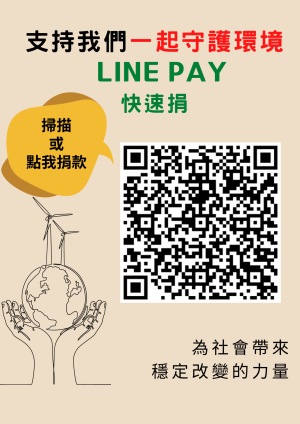Crossroads of Energy and Agri.
您在這裡
Agrivoltaics: At the Crossroads of Energy and Agriculture
with Farmer Chen Guangjing
Author: Jonah Chapman-Sung 宋學賢 Editor: Noel Wang 王崇天
Beautiful Solar Power
Solar power has been deeply influential in sustainable energy throughout the 21st century and is ubiquitous in conversations that promise solutions to today's conflicts over clean energy. That being said, implementing solar most commonly encounters nuances of installation. Every environment has unique demands and constraints that provide a staggering challenge for engineers and entrepreneurs attempting to scale efficient and profitable solar energy facilities. For instance, installing solar arrays on a meaningful scale in cities requires coordination between numerous building owners, city ordinances, and power companies. Doing all this at a magnitude where the produced power will be practically or financially appealing to the involved parties is no small feat.
Agrivoltaics and Taiwan
Focusing on Taiwan, due to the high levels of urban development and mountainous terrain, few options are left for residents wanting to source solar power. This is where agrivoltaics comes in; a cutting-edge advancement in energy procurement utilizing solar arrays are installed over farmland. These photovoltaic cells permit some light to flow through them, allowing farmers to cultivate the land simultaneously. With limited real estate, and a necessity to suit growing electricity demand with clean energy the appeal of agrivoltaics is evident.
Sitting down with a Farmer
On Tuesday, October 15th, I had the privilege of observing an interview with Chen Guangjing (陳光鏡), an organic soybean farmer in Beidou Township, Changhua. Guangjing began his career as an engineer. However in 2015, after considering the well-being of his family, he decided becoming a farmer would be a far healthier environment for him and his young children. Almost a decade later, his farm and outreach program Tianye Qinxue (田野勤學) has been recognized for its achievements in food and agricultural education, in addition to the variety of organic soy-based products it offers. By supplying some background on promising details about agrivoltaics and examining the attitudes, policies, and business models that impact the adoption of this technology I will demonstrate the promise of this inspiring technology.1
Beginning the Interview: Innovations in Japan
This interview’s information is strongly informed by research conducted on-site in Japan by Chen Wan O (陳婉娥), director of Homemakers United Foundation’s Southern branch. A quick investigation reveals that Japan has a long history of successful agrivoltaic systems, showing that Japan is a special case. A 2021 study reveals that Japanese agrivoltaics in 2019 generated approximately 500,000 to 600,000 MWh of power using agrivoltaics, which accounts for 0.8% of the total power generated by solar panels in Japan. While the adoption of this sustainable system in Japan does not account for a large portion of the clean energy generation the nation produces, the data alone has revealed that Japanese agrivoltaic farms have the capacity to grow over 120 different kinds of crops. Among these are paddy-grown rice. Its popularity as an agrivoltaic crop is largely due to demand rather than intrinsic compatibility with agrivoltaics.2 Thus, the ability to cultivate an important staple crop with specialized needs like rice using agrivoltaics suggests the adaptability of photovoltaics in agriculture as a whole, an important testament to the flexible nature of agrivoltaic systems.
The interview began with Chen Wan O of the Homemakers United Foundation discussing the specificities of the Japanese agrivoltaic system with Chen Guangjing. She began to outline the general idea of agrivoltaics before bringing up specific examples of newer technology in the field. Her first example was the benefits of vertical solar panels for agrivoltaics. In Figure 1, you can see a comparison between standard and vertical agrivoltaics. It can be seen how plants that require higher light levels benefit from a vertical system.3 Furthermore, researchers have found that because of the angle at which panels receive the most sunlight, vertical systems add energy to the electrical grid in a way that reduces the likelihood of oversaturation, which renders the grid unable to absorb any produced electricity from the voltaic cells.4
Drought Resistance in Wheat
Looking towards more staple crops, Chen Wan O underscored the promising compatibility of wheat with agrivoltaic systems. Her suggestion is supported by data indicating strong potential for agrivoltaic systems involving this crop. In a 2023 study, it was observed that agrivoltaic systems reduced evaporative water loss in winter wheat fields, which increased drought resistance5. The results of the study indicate identical yields between the equivalent planted surface areas of the agrivoltaic and non-agrivoltaic systems. Wheat accounts for a significant portion of diets world wide. Between the years 2000 and 2023, the average global per capita food usage of wheat was 67.13 kg6. Given this high magnitude of wheat cultivation across the world, promising results from solar integration like this spells hope for the future widespread adoption of agrivoltaics for wheat and other staple crops.
Cows and Solar Panels
Guangjing and Wan O later discussed agrivoltaics adapted to pasturing cows. Research demonstrates pastures with installed solar shading pavillions lowered heat stress levels among grazing cows, as well as rates of respiration in the afternoons. While little is known about the impact of shading structures on the marketable outputs of the cows such as meat and dairy, grazing agrivoltaics offer another promising avenue for large-scale agrivoltaic power generation7. With large swaths of land that have been clear-cut to provide pasturage for cows, methods that maximize the yield of these fields help to offset a portion of the environmental farm intrinsic to dairy farming.
Concerns
The promise of agrivoltaics is evident, with easy application in Taiwan’s large agricultural lands, only a few issues need to be addressed before widespread adoption can begin. Chen Guangjing explains that the typical solar company within Taiwan is concerned solely with maximizing their payout while remaining under the constraints of the policies that encourage agrivoltaic energy production. But companies don't have to act this way. In Japan, because farmers can collaborate with solar manufacturing companies to have solar panels sized to their direct specifications, farmers have agency over their the design of own agrivoltaic systems. By handing power to the farmers, Japan’s agrivoltaic system has achieved great success. Focusing on the development of specific sectors and carefully designed policies, Taiwan can model the successful case of Japanese agrivoltaics.
Remarking on the balance of power between solar companies and farmers in Taiwan, however, Guangjing describes how most agrivoltaic producers essentially lease their land rights to a solar company to build solar panels on their land. Unlike in Japan, these installations are usually designed without consulting the farmer first, and the vast majority of the profits generated from selling the electricity are retained by the solar company. Nevertheless, the money the farmer does earn from this agrivoltaic field far outweighs that which they would have earned through traditional agricultural production alone. It is with this autocratic business model that many of the issues farmers have with agrivoltaics arise.
Guangjing recounts encountering this issue personally after being approached by a solar company asking for 10 acres of land to develop an agrivoltaic plot. Wanting to first test the viability of the solar structure on his property before allocating 10 acres to it, he asked if they could first create an installation the size of one “分地” (fēndì). (This unit is the smallest portion of farmland that Taiwanese farmers can use to calculate crop yields, equivalent to of 991.7 square meters.) However, the solar company was uninterested in compromise and ultimately withdrew from development discussions. Guangjing noted this situation is rather common. Farm owners are given no option to see for themselves how agrivoltaics can operate on their land without taking a massive risk and dedicating a massive portion of their land. Already concerned with being good stewards of their farmland, very few farmers will readily consent to massive solar projects being installed on their land,
especially when the design of these systems does not involve their input.
Outset Impacts of Companies
Broadly speaking, a concerning pattern is arising where companies try to operate on an order of magnitude that makes it difficult for them to coordinate with farmers. The profit incentives that drive large companies to start agrivoltaics in the first place, incidentally create agrivoltaic implementations that also prioritize profit over food production. Furthermore, these systems are designed by engineers without any input from the farmers, yet farmers are expected to maintain the array in addition to their already difficult task of cultivating the land.
What might companies that take responsibility for the money they put towards sustainability look like? Patagonia, an American outdoor clothing and gear company, has set out to clean its supply chain and energy sourcing practices as part of its goal to become carbon neutral by 2025. Notably, the Japanese branch of Patagonia Japan sponsored a 50-kilowatt project in Chiba Prefecture, pictured below. The success of this project has led Patagonia to sponsor an additional two projects with a total combined output of 600 kilowatts8. While Patagonia’s carbon footprint, as part of the clothing industry as a whole, poses enormous dangers to the environment, the company’s investment in agrivoltaics demonstrates how it is possible for large corporations to use their influence to advance incredible sustainability initiatives and cutting-edge technologies for which many can reap the benefits.
-
“田野勤學.” 田野勤學, 2016, www.twsoybean.com.tw/. Accessed 12 Nov. 2024.
-
Tajima, Makoto & Iida, Tetsunari. “Evolution of agrivoltaic farms in Japan.” AIP Conference Proceedings. 2361. (2021): 030002. 10.1063/5.0054674.
-
“Vertical PV for Clean Energy and Crop Production.” Pv Magazine International, pv magazine International, 24 Jan. 2023, www.pv-magazine.com/2023/01/24/vertical-pv-for-clean-energy-and-crop-pro....
-
“What Is Solar Curtailment? – GridX.” Www.gridx.ai, www.gridx.ai/knowledge/solar-curtailment.
-
Pataczek, Lisa et al. “Agrivoltaics mitigate drought effects in winter wheat.” Physiologia plantarum vol. 175,6 (2023): e14081. doi:10.1111/ppl.14081
-
“Global Wheat per Capita Food Use, 2019.” Statista, www.statista.com/statistics/237890/global-wheat-per-capita-food-use-sinc....
-
Sharpe, K T et al. “Evaluation of solar photovoltaic systems to shade cows in a pasture-based dairy herd.” Journal of dairy science vol. 104,3 (2021): 2794-2806. doi:10.3168/jds.2020-18821
-
Bustamante, Rodrigo. “2025 or Bust: Patagonia’s Carbon Neutrality Goal - Patagonia.” Www.patagonia.com, 13 Dec. 2019, www.patagonia.com/stories/2025-or-bust/story-74769.html.


